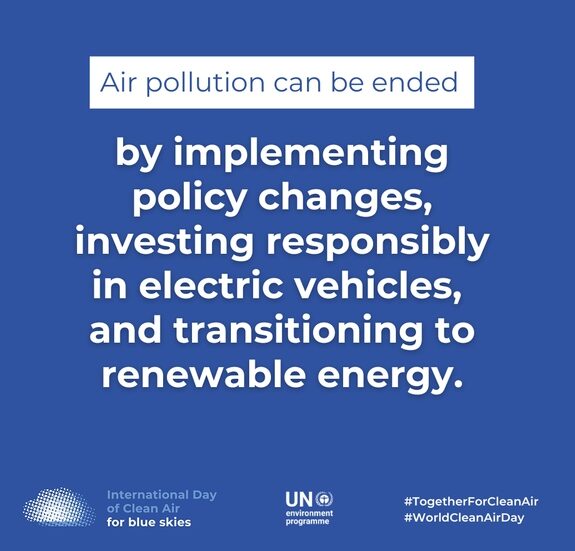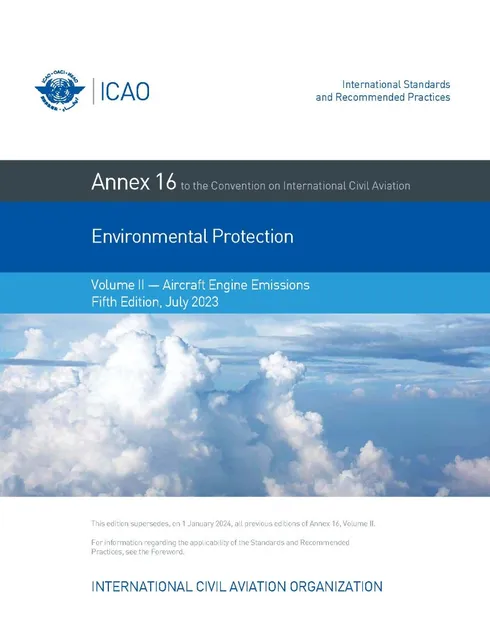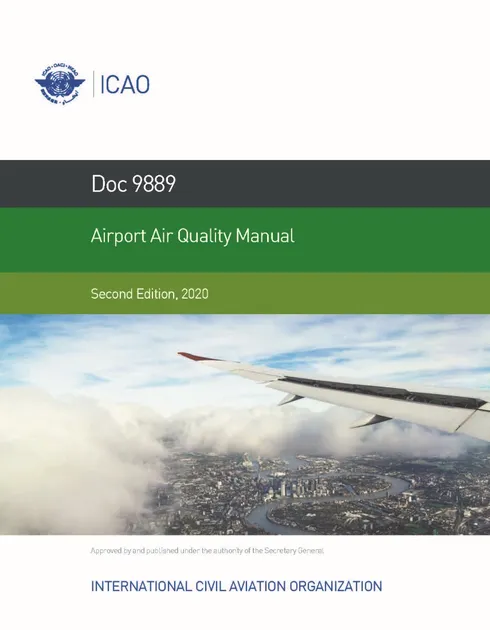Every year on September 7th we recognize the International Day of Clean Air for Blue Skies. The theme of this year’s commemoration, “Together for Clean Air,” underscores the crucial need for collective efforts to combat air pollution. Air pollution is a global issue with far-reaching consequences, impacting both human health and the environment. Everyone has a role to play in safeguarding the earth’s atmosphere and ensuring clean air for all.
 Clean air is integral to the broader framework of sustainable development and the achievement of the United Nations’ Sustainable Development Goals. It is crucial for the well-being of individuals, the health of our planet, and the attainment of a sustainable, prosperous, healthy future. ICAO plays a pivotal role in advancing the cause of clean air and environmental sustainability. In line with the theme “Together for Clean Air,” we recognize the imperative of strong partnerships, increased investment, and shared responsibility in combating air pollution. ICAO is committed to collaborating with all stakeholders, including Member States, service providers and environmental organizations, to collectively address the challenges posed by aviation to local air quality.
Clean air is integral to the broader framework of sustainable development and the achievement of the United Nations’ Sustainable Development Goals. It is crucial for the well-being of individuals, the health of our planet, and the attainment of a sustainable, prosperous, healthy future. ICAO plays a pivotal role in advancing the cause of clean air and environmental sustainability. In line with the theme “Together for Clean Air,” we recognize the imperative of strong partnerships, increased investment, and shared responsibility in combating air pollution. ICAO is committed to collaborating with all stakeholders, including Member States, service providers and environmental organizations, to collectively address the challenges posed by aviation to local air quality.
 ICAO Assembly Resolution A41-20 declares that we address the adverse environmental impacts that may be related to civil aviation activity and acknowledges its responsibility and that of its Member States to achieve maximum compatibility between the safe and orderly development of civil aviation and the quality of the environment. In carrying out its responsibilities, ICAO and its Member States will strive, inter alia, to limit or reduce the impact of aviation emissions on local air quality.
ICAO Assembly Resolution A41-20 declares that we address the adverse environmental impacts that may be related to civil aviation activity and acknowledges its responsibility and that of its Member States to achieve maximum compatibility between the safe and orderly development of civil aviation and the quality of the environment. In carrying out its responsibilities, ICAO and its Member States will strive, inter alia, to limit or reduce the impact of aviation emissions on local air quality.
One of ICAO’s environmental goals is to limit or reduce the impact of aviation emissions on local air quality (LAQ). Since the late 1970s, ICAO has been developing measures to address emissions from aircraft engines in the vicinity of the airport and from relevant airport sources. Volume II of Annex 16 to the Convention on International Civil Aviation contains Standards for aircraft engine emissions and is accompanied by related guidance material and technical documentation. Volume II addresses ways to decrease the negative environmental consequences of airplane engine emissions, particularly regarding air quality and climate change. This publication offers clear and more consistent guidelines, creating a more detailed framework for certifying and operating airplane engines according to specific emissions standards.
 Furthermore, in order to address local air quality in the vicinity of airports, ICAO develops and updates the Airport Air Quality Manual (Doc 9889). From an operational perspective, ICAO has fostered the development of operational procedures as a means of limiting or reducing the impact of aircraft engine emissions that have also reduced significantly local air quality pollution.
Furthermore, in order to address local air quality in the vicinity of airports, ICAO develops and updates the Airport Air Quality Manual (Doc 9889). From an operational perspective, ICAO has fostered the development of operational procedures as a means of limiting or reducing the impact of aircraft engine emissions that have also reduced significantly local air quality pollution.
ICAO’s commitment to reducing air pollution goes hand in hand with the international community’s efforts to substantially reduce deaths and illnesses from hazardous chemicals and air pollution, as outlined in the United Nations’ Sustainable Development Goals. On this International Day of Clean Air for Blue Skies, ICAO reaffirms its dedication to the theme “Together for Clean Air.” By actively engaging with Member States and other stakeholders, ICAO continues to champion cleaner aviation practices, mitigate emissions, and promote shared responsibility in protecting the planet’s atmosphere. Through these concerted efforts, ICAO will support global efforts in ensuring clean air for blue skies for current and future generations.
More information on ICAO’s work to reduce aviation’s impacts on local air quality is available here.
